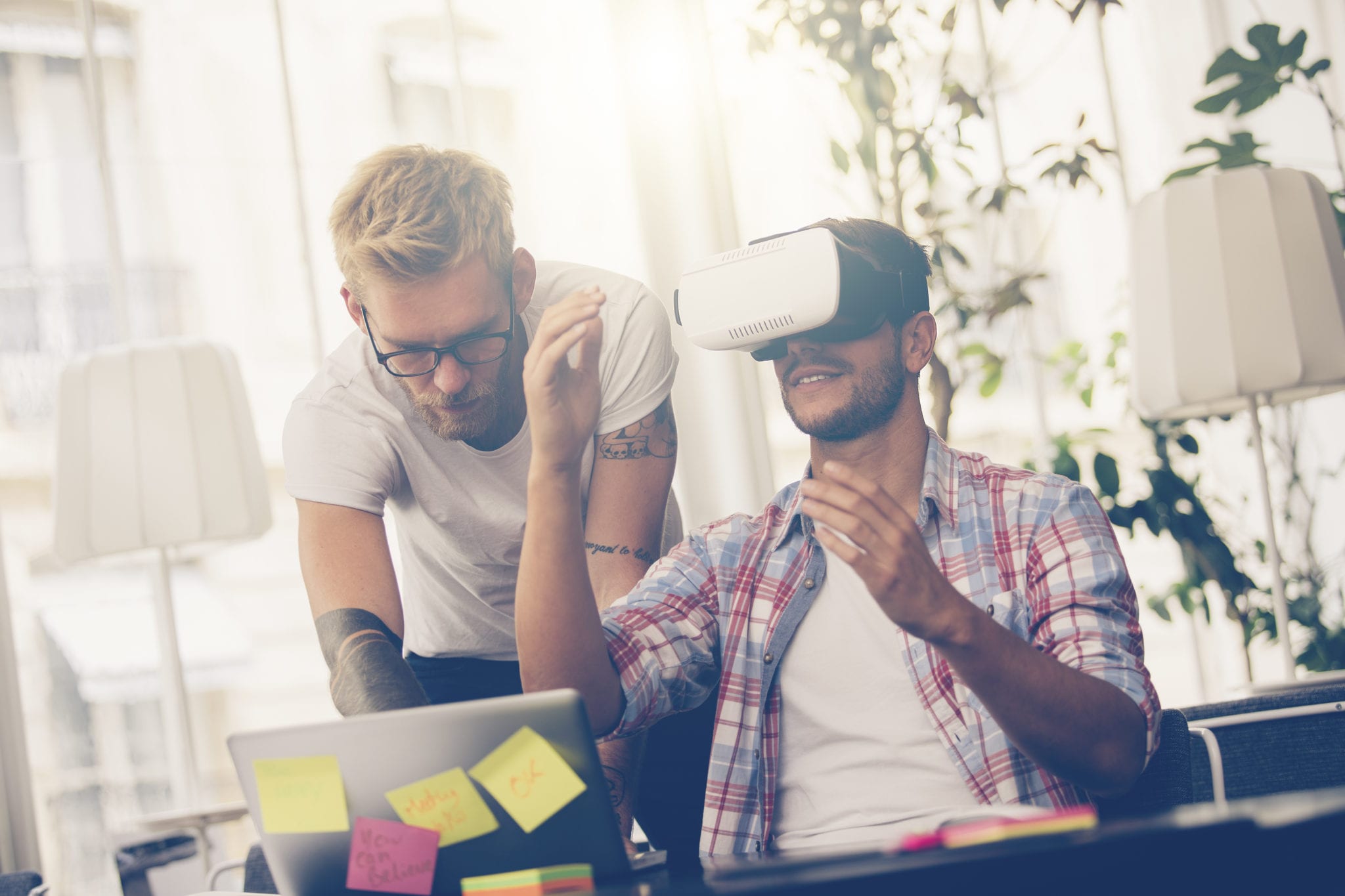The wonder of VR lies in the amplitude of your control over the environment. Wave goodbye to adjusting your work according to your tool. Be efficient and simply adjust your worktool.
Personalized workspaces are the near future’s promise to optimising workflow. Meet your complex needs with more than what conventional workplaces and tools offer. So, how can VR enhance your work, specifically?
Mould your reality
VR’s placement at the intersection of work and play opens up interesting possibilities for its applicability. An idea that has been gaining traction is the concept of “gamification at work”. Game elements are integrated into a non-game context to foster engagement and induce presence. A more enjoyable experience is an incentive to contribute and engage in the activity at hand.
One size does not fit all
One of the many reasons to be fascinated with Greek mythology is that it will always have a fitting tale to give you some food for thought. One such illustrative story is that of Procrustes.
Smith by trade, Procrustes would extend an invitation to travelling passers-by to spend the night in his home. What he had to offer, though, was an iron-cast bed. Not too big and not too small, the bed would almost fit every guest. No one would be a perfect fit, though. Procrustes would ‘adjust’ his guests so that they fit the bed – he would take a few inches off the tall ones, and stretch the short ones to a breaking point. He is hardly known for his empathic nature.
His tale captures the struggle and the futility of fitting into a set standard. Luckily, we now have the luxury to avoid the pains of making a trade-off thanks to VR, which allows you to dictate the terms of this reality yourself.
What’s in it for you?
Immersion and engagement are inherently tied to being in a virtual environment. The most attractive advantage, though, is being time and cost efficient. In many cases, these two are linked. Eliminating travel reduces costs and time requirements for remote teams. Moreover, reviewing a product in the development stage reduces the possibility for costly errors in production that would take a lot of time to correct.
Creative industries can offer highly immersive experiences with less resources and make them continuously available to their audience. Imagine how fun a virtual exhibition, fashion show or concert could be.
The VR industry has its eye on achieving life-like experiences, enhancing photorealistic properties and optimizing hardware issues. In other words, a wider field of view, higher resolution, reduced latency but also wireless headsets, higher processing power and lesser dependency on external computer units.
A bit more than make-believe
Elevating a virtual environment from a space to a place is a building block in the foundation for making a virtual workspace feasible. “Why is that?” you might wonder. The answer lies in the distinction between a ‘space’ and a ‘place’. As such, a space is simply a three dimensional construct – a blank canvas, if you will, whereas a place has properties that amount to a context and in which participants share a common purpose and understanding.
Believable environments make for an immersive context that transform a virtual environment into a virtual place. Users need to break the credibility gap between the simulated environment and their physical reality to achieve presence and immersion.
Therefore, these two elements are fairly important in validating a virtual world. Whichever tools you decide to add to your environment later is completely up to you. Let us take care of creating the virtual world, you just pick the tools to customise your workspace.

